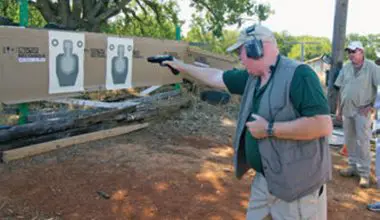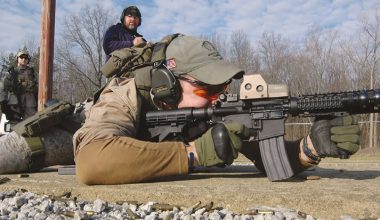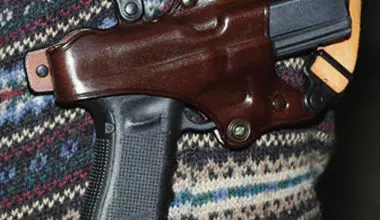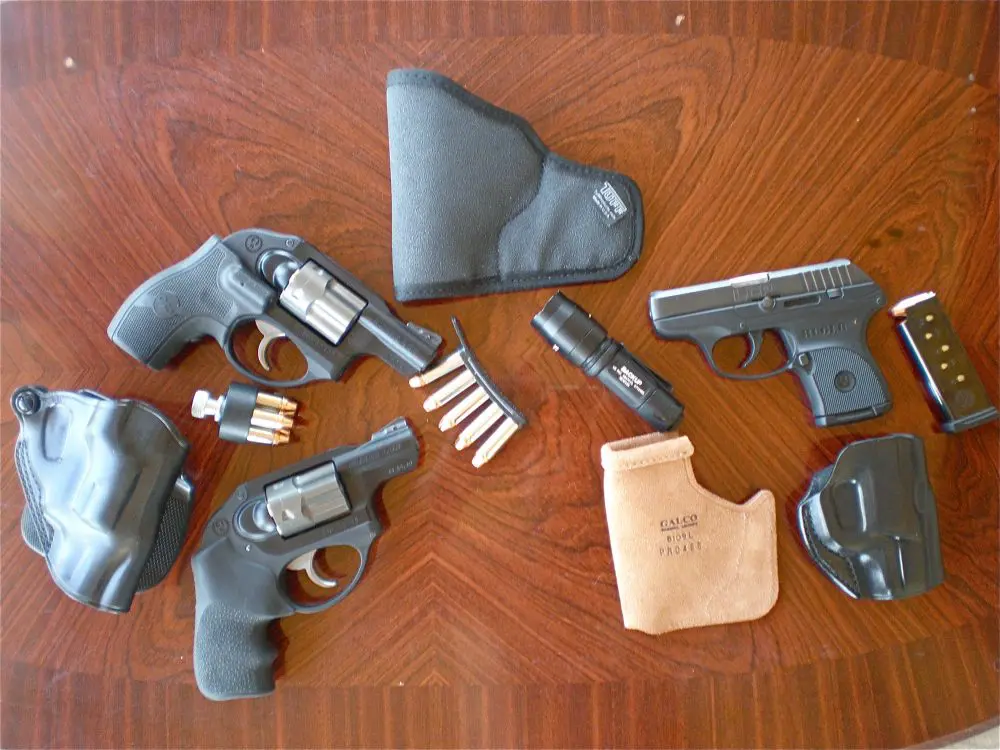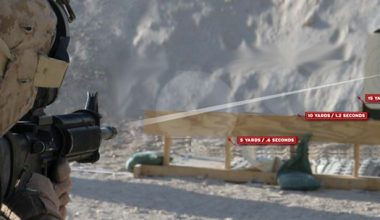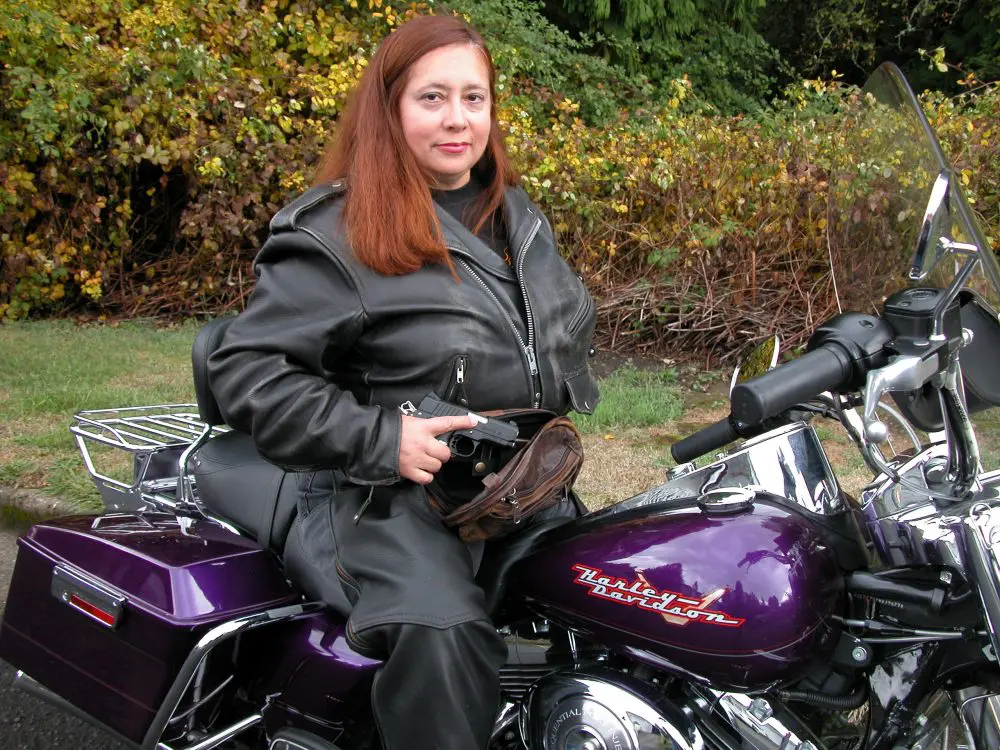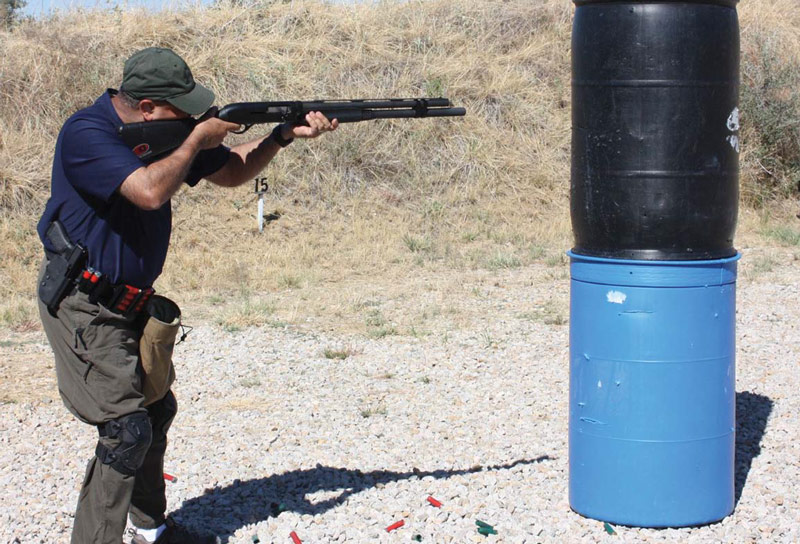
“We are very, very good fans of the shotgun,” he said on the first day of a three-day Advanced Tactical Shotgun Course at his 600-acre shooting school in north Texas.
Shotguns are thought to be only a short-range weapon. As we would find out in this class, this is no longer the case.
Davison has owned and operated Tac Pro for more than a decade, teaching weapon training and self-defense skills to the military, law enforcement officers and civilians. He spent 14 years in the British Royal Marines, where he was CQB instructor for the Special Boat Service (similar to the U.S. Navy SEALs). He has been involved in bodyguard and security duties in Africa and Asia and has trained military and law enforcement personnel as well as civilians worldwide. Bill Byrom, a competitive three-gun shooter, assisted him on this course.
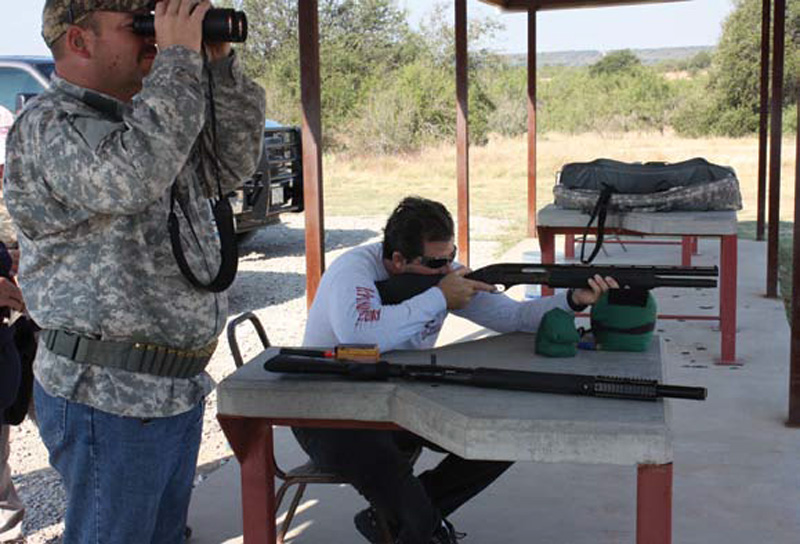
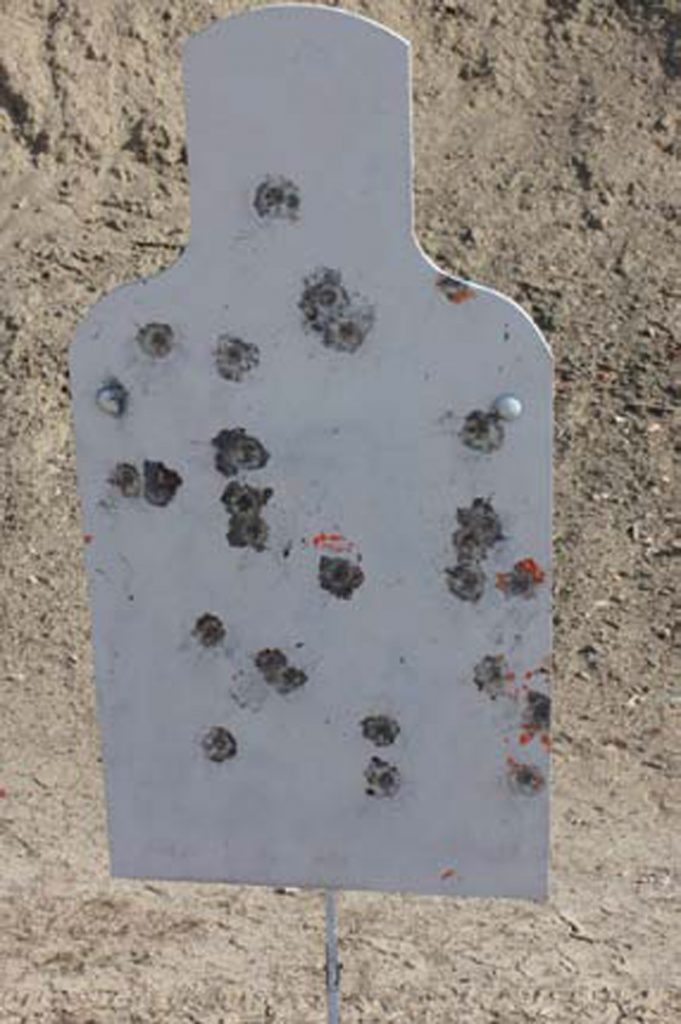
Table of Contents
STUDENTS AND GEAR
There were seven students: two firearms instructors from the Fort Worth Police Department, Mike Moore and O.G. Hill; Moore’s wife Debra, a dispatcher for the same department; Dr. Amin Musani, an audiologist; Jake Freeman, another former Royal Marine doing anti-pirate security in the Indian Ocean; Bill Davison’s wife Michelle; and me. Mike Moore, Freeman and I were using Remington 870 pumps. The others had semi-autos.
We started in the classroom with Davison talking about the tactical use of the shotgun and its ammunition. About a year earlier, I had taken his Primary Tactical Shotgun course, where he described the shotgun as a 300-pound Rottweiler on a short leash. This is where Davison’s admonishment (which we would hear frequently) comes from: “Feed your puppy, feed your puppy.” It was Davison’s way of reminding us to keep topping up the magazine when not firing.
“What I’m trying to do is encourage you that every time you spend some, you feed some. If you do that every time, the shotgun will never let you down.”
Given a choice between a shotgun and a carbine, Davison said the shotgun is more effective at ranges up to 100 yards.
“I’ve seen people survive carbine hits and carry on fighting. Not very often does someone get hit with a shotgun and carry on fighting. They don’t always die, but they’re so messed up that they don’t usually want to continue the fight.”
In the last few years, there have been huge improvements in shotgun ammunition, particularly 12 gauge. With recently manufactured 12-gauge ammunition, we can now hit man-sized targets with 00 Buck out to 50 yards. Manufacturers now buffer the shot and contain it in the wad until it leaves the barrel. This keeps it together and prevents it from getting deformed, thus leading to a much tighter pattern.
No. 4 buck with its 27 pellets is as small as Davison recommends for tactical use. “For room entries or home defense, it’s devastating.”
Davison recommends having a light on the shotgun to identify your threat before you shoot in the dark. “A light is without a doubt the number one accessory you want to put on your shotgun. If you have to defend yourself in court, one of the questions they’re going to ask you is: How did you identify the threat?”
THE RANGE IS HOT
In the afternoon, with the temperature above 100 degrees, we moved outside to the 25-yard range. We shot patterns of 00 buck, keeping all the pellets in the head at five yards. We moved back to 10 yards and then 12, still keeping all the pellets in the head. We moved to 20 yards and shot for the chest. At 25 yards we shot slugs, then moved back to 40 and 50 yards.
Next we performed drills at seven yards. Those armed with pumps would load one and fire one. Those with autos would load two and shoot two.
The second morning was pleasantly cooler than the previous one, with the temperature reaching the low 90s in the afternoon. We started at the 100-yard firing point, shooting off a rest on a concrete table.
We were shooting slugs at a whitepainted steel figure target, with Davison calling our shots through binoculars. I was surprised to find my first shot went high. I had expected the shot to go low over the 100-yard distance. I corrected, aiming lower on the target to get hits.
Although 30 to 35 yards is considered the practical limit for buckshot, we fired 00 buck at 100 yards at the steel target. Most students got a couple of pellets onto the target, but when I shot, Davison said my shot went all around the target. I fired a second round with the same result. He told me to aim at one side or the other of the target and I would probably get hits. I fired at the right-hand edge of the steel and got two pellets on.
We returned to the 25-yard range and fired drills from different positions using birdshot on steel targets at 15 yards. We used plastic barrels and a wooden barricade for cover and shot from standing, kneeling and prone around both sides of the barricade. We were all right-handed, so we had to shoot off our left shoulders when shooting around the left side of the cover. We started each stage with two rounds loaded and had to reload or “feed the puppy” as we went.
We practiced shooting while moving, advancing and backing up between 10 and 25 yards as well as moving side to side. When traversing from left to right, we could shoot normally off the right shoulder, but when going in the other direction, Davison instructed us to shoot off the left shoulder with the right eye closed.
HANDGUN TRANSI TIONS
In the afternoon, we returned to the 25 yard range. Davison told us to load and holster our handguns. From then on, whenever our shotguns malfunctioned or ran out of ammunition, we were to continue the fight with our handguns.
We did the drills with birdshot, but in reality we would be using buckshot and occasionally slugs. Davison said that if we were hitting the bad guy with two or three buckshot pellets and he wasn’t going down, we should go to slugs or head shots with 00 buck. “You need to change something,” he said.
It is essential to keep your slugs separated from your buckshot rounds, because slugs will penetrate much more than buckshot and may not be safe to use under some circumstances. Some students kept slugs in Tactical Strippers on their belts, others in SideSaddles attached to the shotgun.
“I put the slugs in my pocket,” Davison said. “You have to have a way of transitioning to slugs when you need them.”
We were instructed that if we were moving, we should be feeding rounds into the shotgun magazine. “If you are not shooting something, you should be feeding your puppy,” Davison said.
At seven yards, Davison demonstrated shooting from the hip with the shotgun pulled back as far as possible. This is a room-clearing technique that avoids someone being able to grab the barrel when navigating tight corners inside a building.
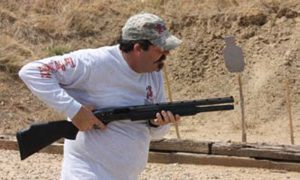
TRAINING DAY THREE
The third day was pleasantly cool compared to the first and second days, and we started at 25 yards on paper targets. After firing three slugs from standing, all I could see were three large holes in the chest area spread widely apart. We then fired one round of 00 Buck at the same point of aim.
When we went up to look at the targets, I discovered that the holes I thought were my slugs were made by the wads. The three slug holes were satisfyingly close together, with the buckshot just under them. This exercise was to establish whether buck and slugs shot to the same point of aim. In my case, the slugs printed slightly higher than the buckshot.
The rest of the morning was devoted to more drills. The range is covered with what Davison calls gravel and I call small rocks. It’s tough on the knees and elbows when shooting from kneeling or prone. I would recommend that anyone taking a course at Tac Pro bring kneepads.
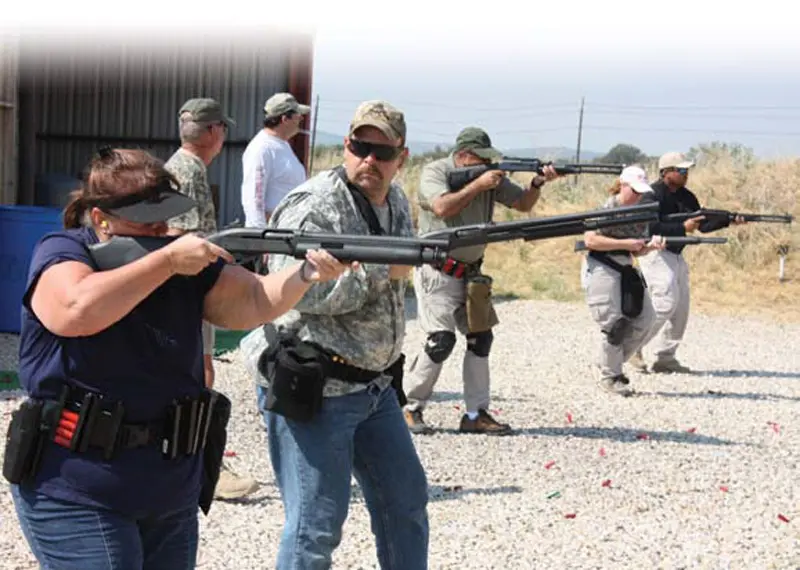
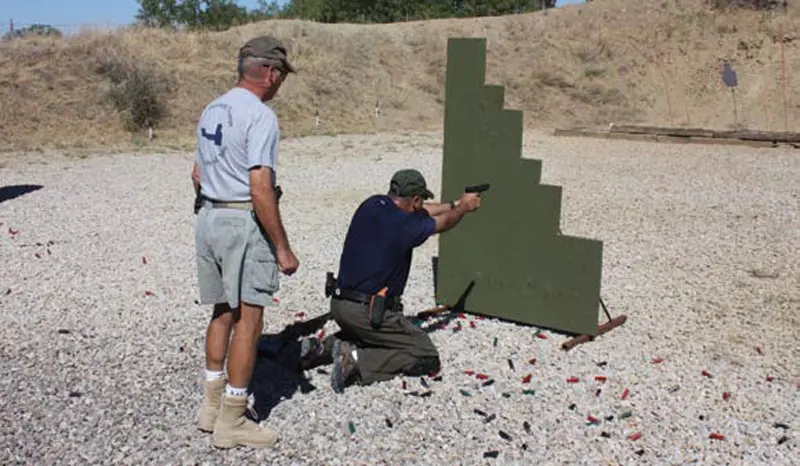
JUNGLE RUN
In the afternoon, we went on what Davison calls the Jungle Run. It was the highlight of the course, where everything we had learned in the previous two days came together. The Run is a vehicle-wide path hedged on each side by small trees and heavy brush that provides good concealment. The path stretched for about 200 yards, with several slight bends and 11 Pepper Poppers scattered along it. The targets varied from about 80 yards to ten feet, with most hidden in the brush at close range. Bill Byrom instructed us to transition from 00 Buck to slugs when necessary.
When it was my turn, I kept to the right side of the path, scanning left and right for the familiar outline of the grey Pepper Poppers in the shadows. I had gone about 15 yards when the path curved slightly to the right and I saw a Pepper Popper at the right edge of the path maybe 80 yards away. I quickly stepped off the path into the brush, kneeling down out of sight of the “bad guy.” I transitioned to slugs to deal with that target. Getting two slugs into a fully loaded pump shotgun requires dumping two buckshot rounds. I edged out of the brush and fired two rounds from kneeling. Both slugs missed.
At Byrom’s urging, I continued down the path, but kept in the brush, out of sight of the distant target. I dealt with two or three close targets but missed seeing one in the brush to the left despite Byrom’s prompting to “scan, scan, scan.” I did remember to continually feed the shotgun as I moved. I took on the distant target from about 50 yards, again using slugs, and this time knocked it down.
When Moore did a demonstration run, I noticed that, whereas I had shot one round at each target, Moore advanced on the targets firing three or four rounds at each. After he finished, the instructors changed the location of the Pepper Poppers and we completed the course again. This time I hit all of them.
POS T-COURSE INTERVIEWS
After we had completed the course, I asked Musani what he had learned. He said this was the second time he had taken this advanced class. The most valuable things he learned were to shoot while on the move and to scan. “In the Jungle Run, I would want to stop, get a sight picture and then shoot, but they emphasize to shoot while you are moving.”
I asked Moore why he and Hill had taken the course, since they were firearms instructors themselves.
“People think firearms instructors get to shoot all the time, but we don’t. As instructors, we hardly ever get to shoot,” Moore said. He added that every time he comes to Tac Pro, he learns something new, because Davison varies his courses. Sometimes Moore is a student and sometimes an assistant instructor helping Davison.
“The big difference with Tac Pro is that Bill teaches you to fight with a shotgun, not just shoot a shotgun,” Moore said. “Learning from someone who’s been there, done that is also a good experience.”
